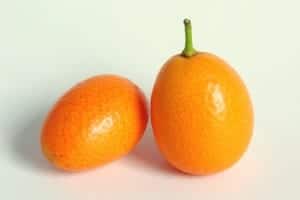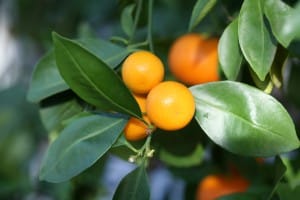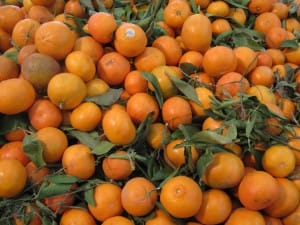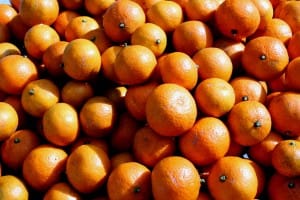Source(s): Randy Drinkard
Citrus produces fruit best when grown in full sun. Citrus trees planted under live oak trees or pines produce only light fruit crops, but often survive freezes since warmer air may be trapped under the sheltering trees.
Citrus trees do best on well-drained, sandy loam soils, but will grow on many soil types if good water drainage is provided. Citrus plants which develop into trees such as satsumas and tangerines may be planted as close as 10 to 15 feet apart although a spacing of 15 to 20 feet is more ideal. Small citrus plants such as kumquats may be spaced as close as 6 to 10 feet apart, if desired.
Avoid planting trees near septic tanks or drain fields. Tree roots may clog the drain and soaps, borax, etc. used in the home may prove to be toxic to the trees.
Locate citrus plants in a protected area if possible, such as near a home or some other structure, preferably on the south side. This type of location provides maximum protection from severe freezes. Usually the wind associated with south Georgia cold weather comes from the north to northwest.
Rootstock Selection
Selection of rootstock is another factor to be considered when planting and establishing citrus plants. Trifoliate orange(Poncirus trifoliata) is a superior rootstock for satsumas, oranges, kumquats and tangerines and is strongly recommended. It induces good cold hardiness in the scion variety and results in favorable yields and high fruit quality. About the only other rootstocks which are of value are sour orange, Cleopatra mandarin and certain of the citranges (cross of sweet orange and trifoliate orange). The Rusk and Carrizon varieties are two of the more popular. Cleopatra mandarin is an exceptionally outstanding rootstock for mandarin-tangerines. Sour orange is not recommended as a rootstock for kumquats because of incompatibility problems.
Pollination
With the exception of Clementine tangerine and certain tangerine hybrids such as Orlando tangelo, citrus trees are self-fruitful and do not require cross-pollination. The self-fruitful types of citrus may be grown as a single tree.
Resource(s): Citrus Fruits for Southern and Coastal Georgia
Center Publication Number: 175
- Saddleback Caterpillars: Watch Out for that Sting - September 26, 2018
- Hanging Baskets - September 24, 2013
- Houseplant Help - September 24, 2013



